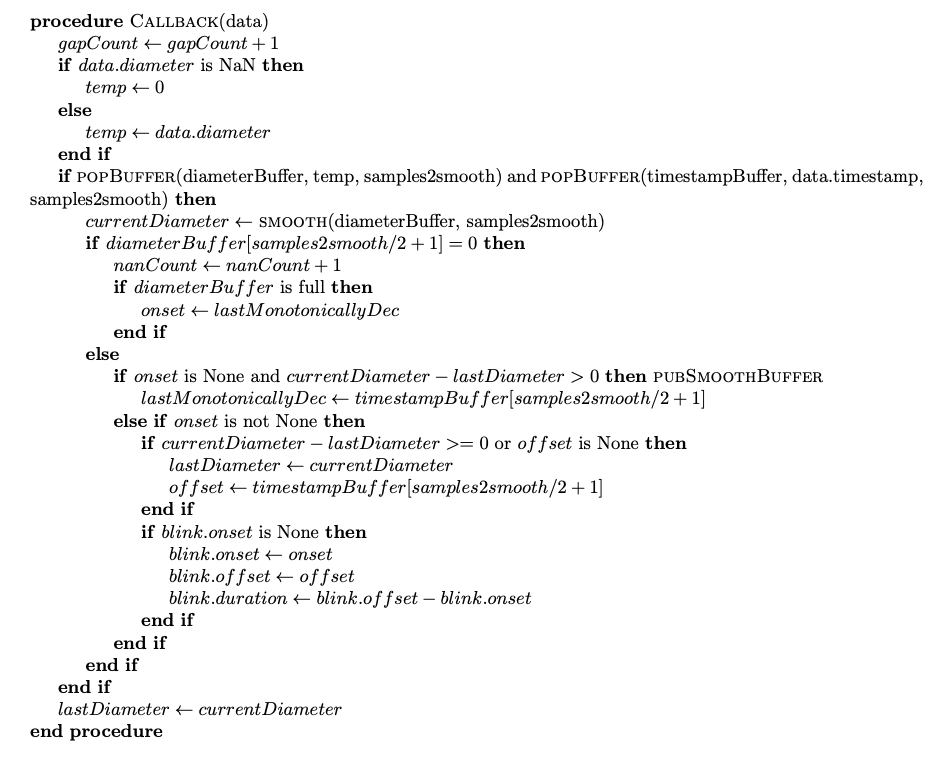A blink detection algorithm ROS package that takes a live stream of pupil diameter message as input, publishes blink message including onset, offset, duration and count.
The live blink detection is aspired from this paper in which a static algorithm is proposed to detect the onset and offset of blinks by analyzing the fluctuations in the pupil data that result from measurement error produced by the eye-tracking device. See A novel blink detection method based on pupillometry noise. However, the method can only read a static slice of pupil diameter data. This repository provides a live and efficient algorithm with O(N) time and O(1) space complexity measured by the number of pupildiameter messages by dynamic programming and one-pass reading the pupil diameter stream.
 The blue line represents the pupil diameter stream. Colored blocks denote the gap with the absence of data. Those gaps between 70ms and 90ms are considered as blinks.
The blue line represents the pupil diameter stream. Colored blocks denote the gap with the absence of data. Those gaps between 70ms and 90ms are considered as blinks.
 Figure 1: Left eye pupil diameter
Figure 1: Left eye pupil diameter
Figure 2: Right eye pupil diameter
Figure 3: Combined eyes for one topic, with smooth filter applied and data interpolated
The blue line represents the pupil diameter stream. Green blocks denote blinks. And the pupil diameter stream is smoothed, with the out-lier removed, missing data during blink interpolated by Akima algorithm.
The callback function is launched every time when a PupilDiameter msg is received by subscriber. You can modify Smooth() as need. Default smooth method is weighted average.

The BlinkDetector class subscribes to the pupil diameter topic and processes the data in real time. It maintains a buffer of recent pupil diameter samples and timestamps, which is used to calculate the smoothed diameter. When a blink is detected, the node publishes a Blink message with the onset, offset, and duration of the blink event.
concat_gap_interval(int): The minimum number of samples between two consecutive blink events for them to be considered separate. The default value is 5.samples2smooth(int): The number of samples used to smooth the pupil diameter data. It should be an odd number. The default value is 11.@staticmethod smooth(x: float[], window_len: int) -> int: filter function that takes raw pupil diameter and window size as parameters.
/humans/faces/face_(id)/eyes/left/pupildiameter(PupilDiameter)/humans/faces/face_(id)/eyes/right/pupildiameter(PupilDiameter)
/humans/faces/face_(id)/eyes/left/blink(Blink)/humans/faces/face_(id)/eyes/right/blink(Blink)
float64 diameter: Pupil diameter in millimetres. NaN indicates a blink event.time timestamp: Timestamp of the measurement.
time onset: Timestamp of the onset of the blink event.time offset: Timestamp of the offset of the blink event.time duration: Duration of the blink event.int32 count: Sequential count of the blink event.
if you are using this code, please add a citation as described at the bottom of https://git.initrobots.ca/aduval/bio_physics#citing.